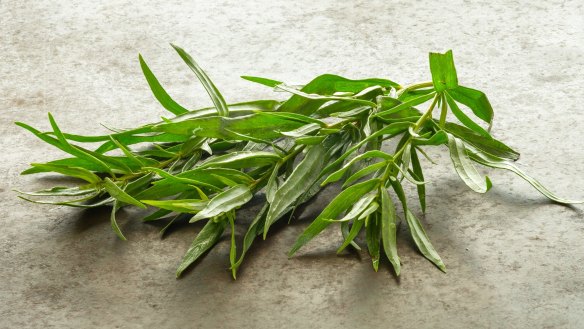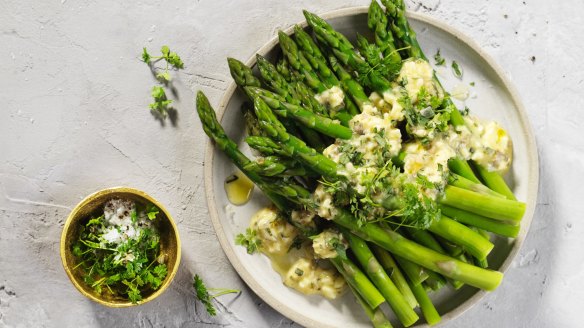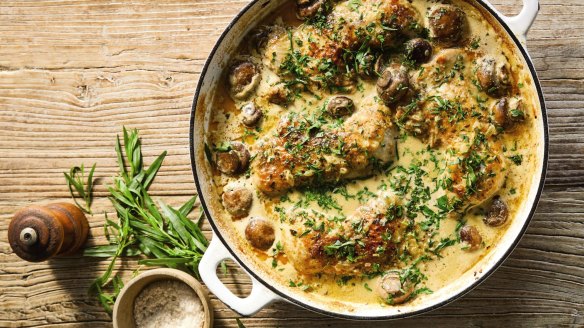Tarragon: Everything you need to know

What is it?
Tarragon is an aromatic perennial herb from the same genus as wormwood, the herb that flavours absinthe. Its main aromatic compound is estragole, named after the French for tarragon, estragon. Synonymous with French cuisine, tarragon arrived late to the western European culinary canon from Siberia in the late Middle Ages.
The hardy original is called Russian tarragon, from which was bred the much more aromatic, softer-leafed French tarragon. Dormant over winter, it rises from a woody rhizome each spring, bringing soft branches of fresh foliage laden with essential oils.
Why do we love it?
It has a bittersweet, fresh flavour that sits somewhere between the licorice-like taste of anise and the earthy grounded notes of dill. When in season in spring and summer, it's a chance to reach for French cookbooks and prepare classic tarragon-scented dishes from bearnaise sauce to poulet a l'estragon.
As tarragon is at its aromatic peak for just a few short months, chefs try to capture its spirit by infusing it in vinegar to use in dishes throughout the year.
Finally, tarragon is the masculine note, alongside the softer chervil, parsley and chives, in the French culinary quadrumvirate of "fines herbes".

How do you use it?
- Celebrate spring with a dish of fresh asparagus with tarragon and chervil or a crunchy prawn and savoy cabbage salad with tarragon dressing or make a tarragon mayonnaise to go with eggs, crab, fish, chicken or even on a steaming baked potato.
- Chop fresh tarragon and mix through a salad or roast a chook on a scant bed of tarragon, with some white wine and garlic.
- Mix tarragon leaves through a French omelette and top with goat's cheese or crab meat, chervil and a little creme fraiche.
Who uses it?
A favourite of chef and author Stephanie Alexander, tarragon has featured on her spring and summer menus since she opened her eponymous Melbourne restaurant in the 1980s. In her latest cookbook, Home, she offers a simple but elegant recipe of young zucchini cooked in butter with tarragon and parsley, a paean to spring.
She also marries tarragon with the richness of clarified butter and cream in a baked chicken and mushroom dish seasoned with her own tarragon vinegar, a seasoning for which she provides a very easy recipe.

Alexander also riffs on tarragon's sensual aromatic notes in a cherry compote, where the leaves of tarragon are simmered in a lemon and sugar syrup to release the essential oils.
Where do you get it?
Look for tarragon in farmers' markets, city markets and green grocers. Supermarkets do stock plastic-wrapped tarragon throughout the year, but this tends to be less aromatic than tarragon in season. Always ask for French tarragon and look for fresh, deep green leaves that are not withered or droopy. Store in a damp cloth or paper towel in the fridge for up to a week.
It is easy to grow and will thrive in a medium-sized pot in a sunny and protected spot in the garden or on a balcony.
Suggest an ingredient via email to brainfood@richardcornish.com.au or tweet to @foodcornish
Appears in these collections
- More:
- Food
- Brain food
